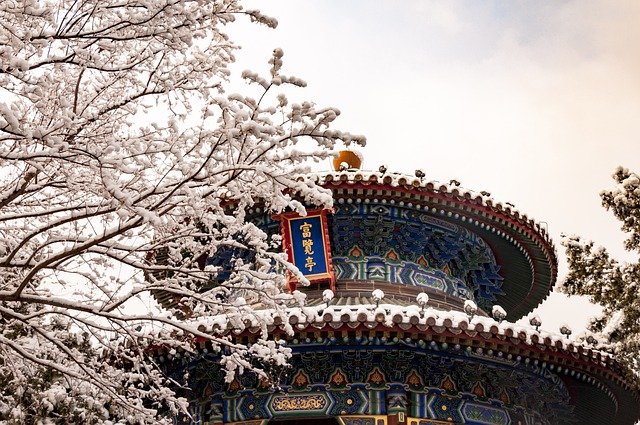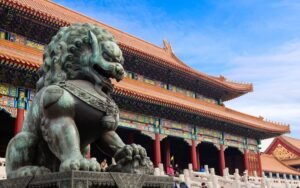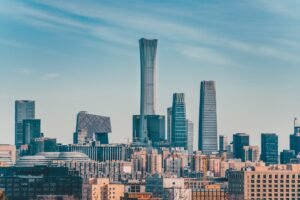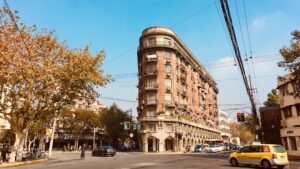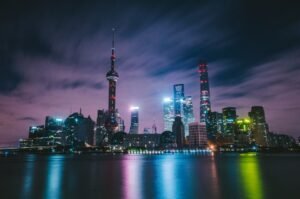China’s National Day, celebrated on October 1st, is one of the most significant public holidays in the country, marking the anniversary of the founding of the People’s Republic of China in 1949. It is a day filled with pride, patriotic displays, and massive celebrations across the nation. One of the most anticipated and symbolic events of the day is the grand military parade (阅兵式, yuèbīng shì) held in the heart of Beijing, often on Tiananmen Square (天安门广场, Tiān’ānmén Guǎngchǎng).
For Chinese learners, watching the military parade can be both a cultural and linguistic learning experience. The event is rich in history, symbolism, and political significance. Decoding the language and customs behind this grand ceremony offers insight not only into China’s military strength but also into its cultural values and national identity.
In this article, we will explore the elements of China’s National Day military parade, decode the key vocabulary and expressions used to describe the event, and provide insight into how to discuss and understand this significant celebration in Chinese.
If you’re interested in learning more about Chinese culture and improving your language skills, consider enrolling in the flexible Chinese courses offered by LC Chinese School in Oslo. These courses are tailored to meet the needs of learners at all levels, helping you improve your understanding of both the language and the culture.
Table of Contents
Toggle1. Historical Significance of the National Day Military Parade
The first National Day military parade took place on October 1, 1949, during the Proclamation of the People’s Republic of China (中华人民共和国成立, Zhōnghuá Rénmín Gònghéguó chénglì). Since then, the military parade has been an important part of the National Day celebrations, showcasing the strength and capabilities of China’s armed forces.
The parade is a powerful symbol of national unity, modernization, and the country’s growing influence on the global stage. It serves not only as a reminder of the struggles and achievements of the Chinese Communist Party but also as a way to inspire patriotism and confidence in the future of China.
Every parade is meticulously planned and executed, with thousands of military personnel, cutting-edge equipment, and even military aircraft involved. For Chinese language learners, understanding the context of the parade and being able to discuss it in Chinese offers valuable insight into both the language and the cultural significance of this grand event.
Vocabulary related to the history and significance:
- 阅兵式 (yuèbīng shì) – Military Parade
- 中华人民共和国成立 (Zhōnghuá Rénmín Gònghéguó chénglì) – The founding of the People’s Republic of China
- 爱国主义 (àiguó zhǔyì) – Patriotism
- 军队 (jūnduì) – Military
- 现代化 (xiàndàihuà) – Modernization
- 全球影响力 (quánqiú yǐngxiǎnglì) – Global influence
Example Sentence:
中国的阅兵式展示了军队的现代化和全球影响力。
Pinyin: Zhōngguó de yuèbīng shì zhǎnshì le jūnduì de xiàndàihuà hé quánqiú yǐngxiǎnglì.
Translation: China’s military parade showcases the modernization of the military and its global influence.
2. Structure of the Military Parade
The structure of the military parade is designed to be grand and ceremonial. The event usually starts with the Flag-raising Ceremony (升旗仪式, shēngqí yíshì) at Tiananmen Square. Following that, China’s highest leaders, including the President and other government officials, take their place on the Tiananmen Rostrum (天安门城楼, Tiān’ānmén Chénglóu) to observe the parade. The President traditionally delivers a speech before inspecting the troops.
The parade itself is divided into several sections, which typically include:
2.1 Ground Forces (地面部队, Dìmiàn Bùduì)
The ground forces segment includes formations of infantry troops (步兵, bùbīng), special operations units (特种部队, tèzhǒng bùduì), and armored vehicles (装甲车, zhuāngjiǎ chē). These units march in perfect unison, demonstrating discipline and strength. The military uniforms and equipment on display often represent the latest advancements in China’s military technology.
Example Sentence:
步兵和装甲车队伍整齐划一地通过天安门广场。
Pinyin: Bùbīng hé zhuāngjiǎ chē duìwǔ zhěngqí huáyī de tōngguò Tiān’ānmén Guǎngchǎng.
Translation: The infantry and armored vehicle formations marched in perfect alignment through Tiananmen Square.
2.2 Naval Forces (海军部队, Hǎijūn Bùduì)
The naval forces section showcases China’s expanding maritime capabilities, with displays of advanced warships (战舰, zhànjiàn) and naval personnel (海军官兵, hǎijūn guānbīng). Even though actual ships are not part of the parade, models and personnel represent the strength of China’s navy.
Example Sentence:
海军部队展示了中国战舰的最新技术。
Pinyin: Hǎijūn bùduì zhǎnshì le Zhōngguó zhànjiàn de zuìxīn jìshù.
Translation: The naval forces showcased the latest technology in China’s warships.
2.3 Air Forces (空军部队, Kōngjūn Bùduì)
The air force segment is one of the most thrilling parts of the parade, with fighter jets (战斗机, zhàndòujī) and other military aircraft performing spectacular aerial maneuvers. The planes often fly in precise formations, sometimes releasing colored smoke in the colors of the Chinese flag: red and yellow.
Example Sentence:
空军的战斗机在空中划出红色和黄色的烟雾,象征着国旗的颜色。
Pinyin: Kōngjūn de zhàndòujī zài kōngzhōng huà chū hóngsè hé huángsè de yānwù, xiàngzhēngzhe guóqí de yánsè.
Translation: The air force’s fighter jets released red and yellow smoke, symbolizing the colors of the national flag.
2.4 Missile Forces (导弹部队, Dǎodàn Bùduì)
One of the most significant parts of the military parade is the display of China’s missile forces (导弹部队, dǎodàn bùduì), including ballistic missiles (弹道导弹, dàndào dǎodàn) and other advanced missile technology. This section is meant to demonstrate China’s military prowess and its ability to defend its sovereignty.
Example Sentence:
导弹部队的展示让人感受到了中国的军事力量。
Pinyin: Dǎodàn bùduì de zhǎnshì ràng rén gǎnshòu dào le Zhōngguó de jūnshì lìliàng.
Translation: The display of the missile forces made people feel the strength of China’s military power.
2.5 Civilian Section (民兵, Mínbīng)
In addition to the armed forces, the parade also includes a civilian section that highlights the contributions of workers, students, and professionals to China’s development. This section showcases China’s achievements in technology, education, and industry.
Example Sentence:
民兵方队体现了中国社会各界对国家发展的贡献。
Pinyin: Mínbīng fāngduì tǐxiàn le Zhōngguó shèhuì gèjiè duì guójiā fāzhǎn de gòngxiàn.
Translation: The civilian formations reflected the contributions of various sectors of Chinese society to the country’s development.
3. Key Vocabulary for the Military Parade
To fully understand and discuss the military parade in Chinese, it’s important to familiarize yourself with some key terms related to the event. Here’s a list of essential vocabulary:
- 阅兵式 (yuèbīng shì) – Military Parade
- 升旗仪式 (shēngqí yíshì) – Flag-raising Ceremony
- 天安门广场 (Tiān’ānmén Guǎngchǎng) – Tiananmen Square
- 军队 (jūnduì) – Military/Armed Forces
- 步兵 (bùbīng) – Infantry
- 装甲车 (zhuāngjiǎ chē) – Armored Vehicle
- 海军 (hǎijūn) – Navy
- 空军 (kōngjūn) – Air Force
- 导弹 (dǎodàn) – Missile
- 战斗机 (zhàndòujī) – Fighter Jet
- 弹道导弹 (dàndào dǎodàn) – Ballistic Missile
- 国旗 (guóqí) – National Flag
- 敬礼 (jìnglǐ) – Salute
- 领导人 (lǐngdǎorén) – Leaders
Example Sentence:
领导人在天安门城楼上观看阅兵式,并向军队敬礼。
Pinyin: Lǐngdǎorén zài Tiān’ānmén Chénglóu shàng guānkàn yuèbīng shì, bìng xiàng jūnduì jìnglǐ.
Translation: The leaders watched the military parade from the Tiananmen Rostrum and saluted the armed forces.
4. Decoding Symbolism in the Parade
The National Day military parade is filled with symbols that reflect China’s strength, unity, and progress. From the choice of uniforms to the selection of military hardware, each detail is meant to convey a message.
4.1 The National Flag and Colors
The national flag (五星红旗, Wǔxīng Hóngqí) and its colors—red and yellow—are ever-present throughout the parade. Red represents the communist revolution and the bloodshed in the struggle for independence, while yellow symbolizes the prosperity of the Chinese nation.
Example Sentence:
五星红旗在阅兵式上随风飘扬,象征着中国的繁荣和团结。
Pinyin: Wǔxīng Hóngqí zài yuèbīng shì shàng suífēng piāoyáng, xiàngzhēngzhe Zhōngguó de fánróng hé tuánjié.
Translation: The Five-Star Red Flag waved in the wind during the parade, symbolizing China’s prosperity and unity.
4.2 Precision and Discipline
The precise marching and synchronization of troops represent the discipline and unity of China’s armed forces. The intricate movements and impeccable coordination reflect the country’s ability to mobilize and its commitment to order and stability.
Example Sentence:
整齐划一的步伐体现了军队的纪律性和战斗力。
Pinyin: Zhěngqí huáyī de bùfá tǐxiàn le jūnduì de jìlǜxìng hé zhàndòulì.
Translation: The synchronized marching demonstrates the discipline and combat capability of the military.
5. How to Discuss the Parade in Chinese
When discussing the National Day military parade in Chinese, it’s useful to know how to share your thoughts on various aspects of the event. Here are a few conversational phrases:
- 你看了国庆节的阅兵式吗?(Nǐ kàn le Guóqìng Jié de yuèbīng shì ma?) – Did you watch the National Day military parade?
- 我觉得这次阅兵式展示了中国的强大和自信。(Wǒ juéde zhè cì yuèbīng shì zhǎnshì le Zhōngguó de qiángdà hé zìxìn.) – I think this year’s parade showcased China’s strength and confidence.
- 你对导弹部队的展示有何看法?(Nǐ duì dǎodàn bùduì de zhǎnshì yǒu hé kànfǎ?) – What do you think about the missile forces display?
Conclusion
China’s National Day military parade is not just a show of military power; it is a carefully orchestrated display of the nation’s achievements, aspirations, and unity. Decoding the parade in Chinese requires understanding the key vocabulary, the structure of the event, and the deep symbolism embedded in each segment. For learners of Chinese, being able to discuss such a significant cultural event not only enriches their language skills but also deepens their understanding of China’s national identity.
If you want to continue exploring Chinese culture and improve your language proficiency, consider enrolling in the flexible Chinese courses offered by LC Chinese School in Oslo. These courses are designed to help learners at all levels engage with both the language and the rich cultural heritage of China.
By learning the language and understanding the meaning behind the military parade, you’ll be better equipped to appreciate the cultural significance of China’s National Day and communicate effectively about this important event in Chinese.

